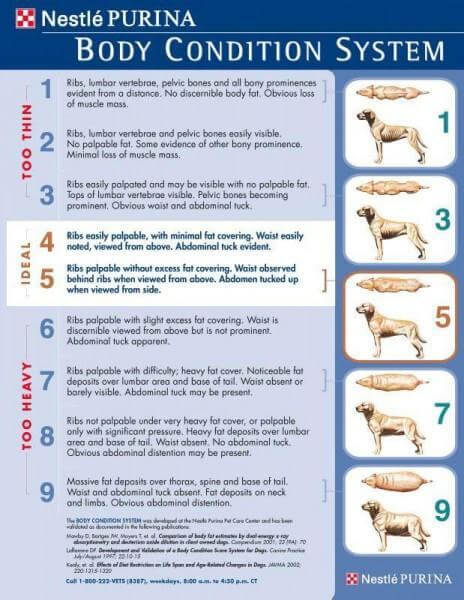
Obesity and your pet
An article in the Journal of American Veterinary Medical Association (JAVMA) stated that “obesity is estimated to be the most prevalent manifestation of malnutrition in dogs and cats in Western Society (Burkholder, 653). In practical terms, pet obesity is defined as any pet that is greater than 20% over their optimal body weight. A pet of ideal weight has approximately 15-20% body fat. This means an obese pet has a minimum of 40% body fat! Recent surveys of veterinary patient records have found that 53% of dogs and 55% of cats have a weight problem. Furthermore, 21.4% of dogs and 24.9% of cats are classified as obese. An alarming fact of this same survey found that 22% of dog owners and 15% of cat owners described their pet as “normal” when their veterinarian classified their pet as overweight or obese.
How does being overweight affect my pet? Obese patients have been shown to be at an increased risk for numerous health problems including degenerative joint disease, heart disease, diabetes, and increased incidence of endocrine disease and even certain types of cancer. While pet weight loss requires commitment and hard work on the part of the pet owner, there are numerous health benefits for our furry friends including lower incidence and later onset of chronic disease, lower complication risk for anesthesia/surgery, and slower progression of clinical signs of osteoarthritis. While all of these health benefits are important, one of the most dramatic benefits to having your pet maintain a healthy weight is a longer life span! The Purina Lifetime study showed that dogs of a healthy weight on average lived 2 years longer than their littermates who were overweight.
To help your furry friend lose weight, diet and exercise are going to be your most useful tools. Studies have shown that the risk of obesity in dogs appears to decrease for each hour of exercise they receive per week. As a basic guideline, walking for 15-30 minutes/5-7 days a week with your dog is a great starting point. If your dog loves to go swimming then substitute 15 minutes of swimming 5-7 days a week. You can even have help your feline friends exercise at home by using motorized cat toys, feeding toys/puzzles, or make them “work” to find their food by moving food bowls daily between different rooms in your house.
Weight loss requires a lifelong commitment and owners need to be prepared for a slow and gradual process to achieve lasting success. Consultation with one of our veterinarians prior to starting a weight loss plan is recommended to ensure that this is a safe and healthy process for your pet. At the appointment, we can discuss appropriate diets, prescription weight-loss diets, and healthy, low calorie treats for your pet. We can also make an exercise plan and give specific instructions on home feeding guidelines. Prior to your weight loss appointment, keep a 7-day food journal tracking everything your pet eats. This will help your veterinarian calculate your pet’s ideal calorie intake and formulate a long-term weight loss and exercise plan for your furry friend. Call and schedule a weight loss consultation appointment today. Commit yourself to give your pet the longest and healthiest life possible.

